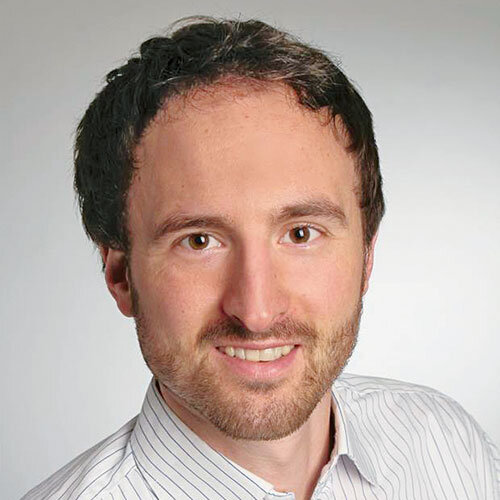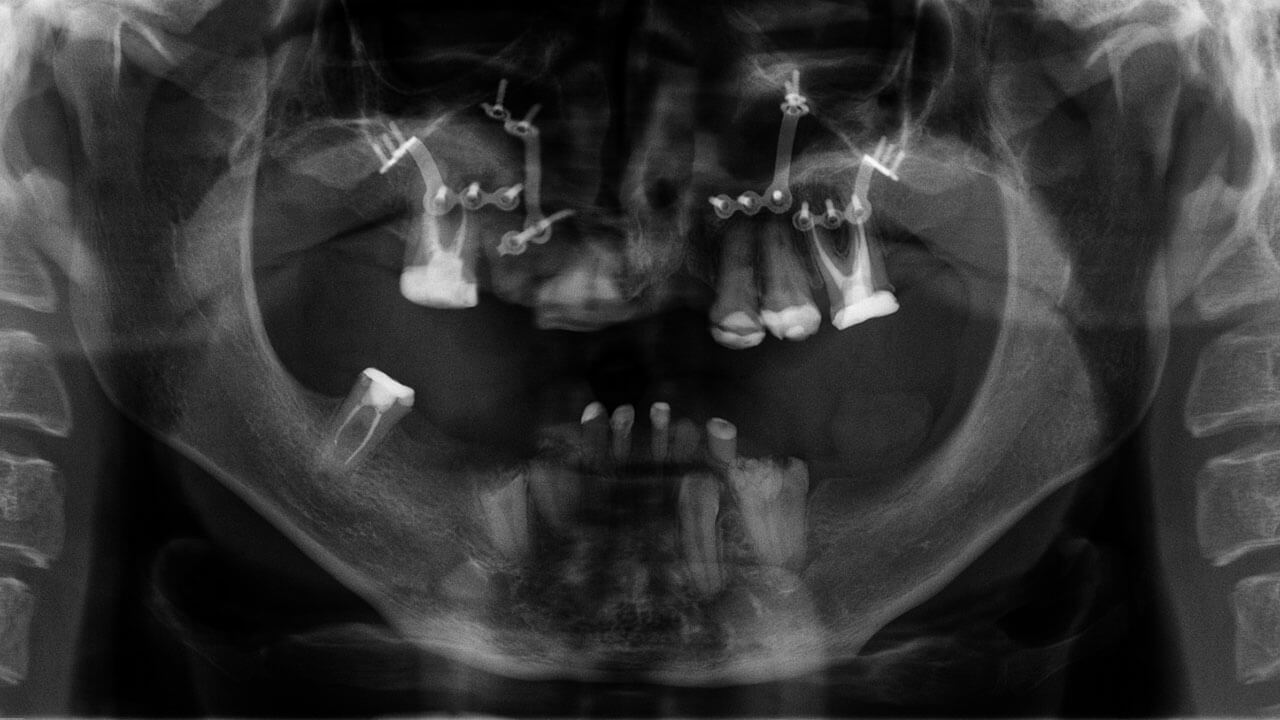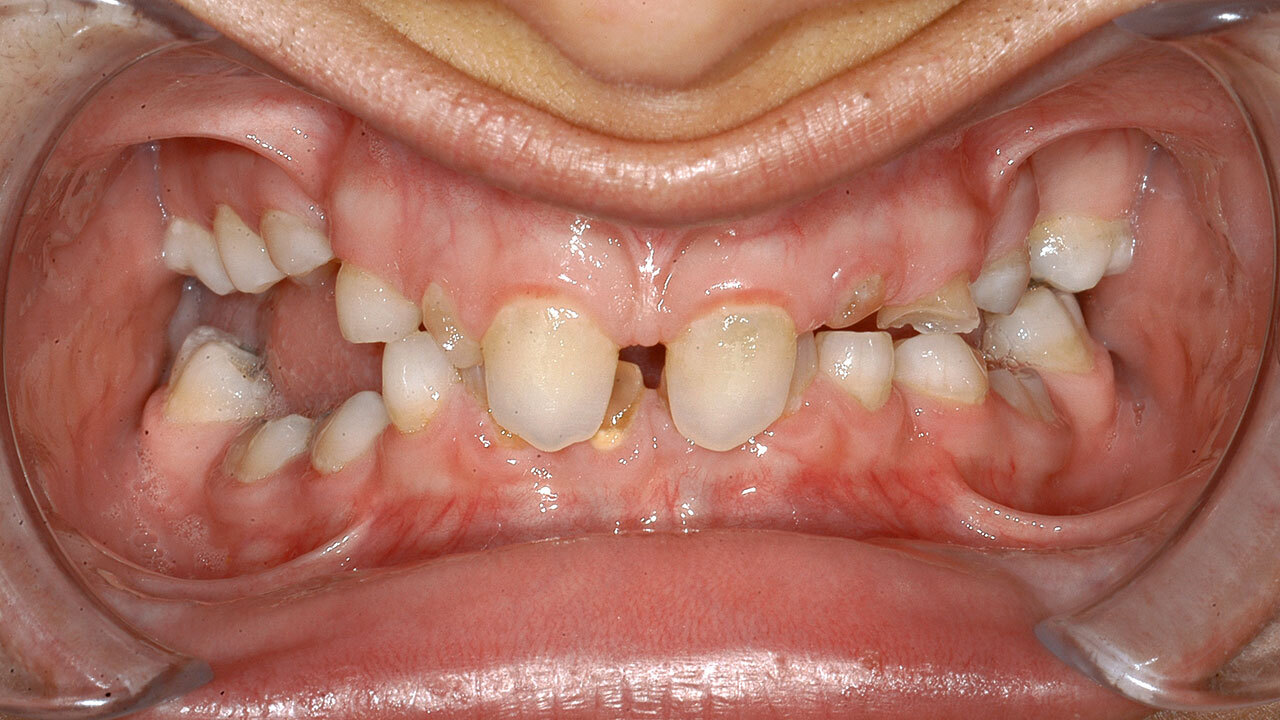International Poster Journal of Dentistry and Oral Medicine, 2/2025
Poster 2690, Language: English, GermanJaber, Mona / Daume, Linda / Hanisch, Marcel / Jung, Susanne / Jaber, MohammedThe aim of this study was to determine the extent to which pain reduction can be achieved by applying a new conservative treatment approach (from a neurological and dental perspective) for jaw and facial pain. 42 pain patients presented at the maxillofacial outpatient clinic after an unsuccessful search for a dental focus. The criteria were jaw and facial pain. Of these, 25 patients had previously undergone inpatient neurological assessment due to pain exacerbation. The patients were also categorized according to whether they were receiving neuroleptics. All patients were treated in the MKG according to the same protocol. All patients received a total of 2 questionnaires. One before therapy and the second after 6 weeks of wearing the splint. At the 1st session, the patient undergoes an osteopathic screening; the 1st session also includes a detailed anamnesis. During the 2nd session, osteopathic treatment is carried out while the bite is contactless using cotton rolls. The two main influences on the position of the temporomandibular joint are manipulated: the occlusion by means of cotton rolls and the osteopathic treatment of the masticatory muscles in particular. The bite is then taken directly without any manipulation. In the 3rd session, the osteopathic treatment is carried out first and then the splint is inserted. The patients had to wear the splint permanently for 6 weeks (except for food intake) for neuromuscular adaptation. The patients received physiotherapy during this phase. 6 weeks after wearing the splint, the patients were called in for the 1st splint check after osteopathic treatment. The 2nd questionnaire was now completed by the patients. The results: Eleven patients wore the splint at night and hourly during the day. The patients described relaxed masticatory muscles in the morning. The intensity of pain and the initial symptoms were reduced, but were still present. Of the 31 patients who adhered to the intensive wearing mode of the splint, 22 patients were free of symptoms and complaints. In the remaining 9 patients, the symptoms and complaints were still present, but were described as significantly reduced. Conclusion: Based on the 42 patients treated, it can be concluded that the therapeutic approach is promising for the treatment of jaw and facial pain.
Keywords: Jaw and facial pain, neurology, osteopathy, dental splint
International Poster Journal of Dentistry and Oral Medicine, 1/2025
Poster 2686, Language: English, GermanJaber, Mona / Trento, Guilherme / Daume, Linda / Hanisch, Marcel / Kleinheinz, JohannesPrimary failure of eruption is a genetic partial eruption disorder that leads to an open posterior bite. The clinical severity and manifestation of primary failure of eruption are variable. The correct diagnosis of this eruptive anomaly plays an essential role in treatment planning, which can be prosthetic, orthodontic, surgical or multidisciplinary. The aim of this study was to determine the extent to which adequate treatment can be derived from the radiologic presentation of the PFE in the orthopantomogram. Preoperative panthomogram images were evaluated in 42 patients with confirmed PFE. The basis for treatment decisions was defined as follows: Evaluation of the affected teeth, evaluation of the bone, occlusal lines in the posterior region. Treatment can be standardised on the basis of orthopantomogram images in patients with PFE. We were able to derive the following treatment options from the orthopantomogram images: If the teeth are slightly below the occlusal plane, prosthetic treatment is indicated; in the case of a negative occlusal line in the mandible and also in the maxilla, extraction / augmentation / implantation / prosthetics should be selected as a treatment option; if the occlusal plane is displaced caudally in the mandible and cranially in the maxilla, a bimaxillary repositioning osteotomy would be indicated; if the occlusal plane is displaced caudally in the mandible and cranially in the maxilla, distraction or a segmental osteotomy with fixation would be indicated. The evaluation of orthopantomogram images of confirmed primary failure of eruption patients has shown that criteria can be defined that lead to standardisation and simplification of treatment.
Keywords: orthopantomogram, primary failure of eruption, PFE, treatment decisions, treatment standardised
International Poster Journal of Dentistry and Oral Medicine, 3/2024
Poster 2633, Language: English, GermanWillich, Leon / Oelerich, Ole / Hanisch, MarcelObjective: The aim of this study was to investigate patients with classical (cEDS) and hypermobile (hEDS) Ehlers-Danlos syndrome (EDS) with regard to the prevalence and quality of temporomandibular disorders (TMD). In addition, the connection to chronic pain and psychological distress was investigated. EDS are classified as rare diseases, of which 13 subtypes can be distinguished according to the current classification (1). hEDS and cEDS are among the two most common subtypes (1,2). A characteristic feature is hypermobility of the joints. According to current literature, patients with EDS suffer more frequently from temporomandibular joint problems (3). The study conducted here is intended to be a further step in the research of the disease and the development of individualised treatment methods. Methods: Participants were recruited via self-help groups in Germany, Austria and Switzerland as well as via social media and subjected to an online questionnaire. Free-text questions on TMD-specific symptoms and previously diagnosed TMDs and their treatment, the German version of the Depression Anxiety and Stress Scale and the German version of the Graded Chronic Pain Status were used. Results: 259 participants were included (230 hEDS/29 cEDS). 49.2% of participants had painful or restricted jaw movements, and 84.9% had pain in the masticatory muscles, with 46.3% having a previously diagnosed TMD. A significance analysis showed a 2.5-fold higher risk of chronic pain in participants with diagnosed TMD. 22% of participants had a critical score for depression, 53.3% had a critical score for anxiety and 34.0% had a critical score for stress. Conclusion: CMD problems and chronic pain are common in patients with cEDS and hEDS. The lack of knowledge about these problems can lead to psychological distress. Further research is needed to adequately treat patients with EDS and to develop individualised treatment concepts.
Keywords: Ehlers-Danlos syndrome, oral health, rare diseases, temporomandibular disorder
Dentista, 2/2024
Pages 37-39, Language: GermanBregulla, Jana Lauren / Pfleiderer, Bettina / Hanisch, MarcelDie regelmäßigen Patientenkontakte in der zahnmedizinischen Praxis ermöglichen es Zahnärzten und Zahnärztinnen, eine entscheidende Rolle bei der Aufdeckung häuslicher Gewalt zu spielen. Das Auftreten von häuslicher Gewalt kennt keine sozialen Grenzen und betrifft Menschen jeden Alters, unabhängig von sexueller Orientierung oder Ethnizität. Häusliche Gewalt kann sich in verschiedenen Formen manifestieren, körperlich, sozioökonomisch, sexuell, psychologisch und in Form von Stalking. Zusätzlich kann Vernachlässigung, also das Ausbleiben angemessener Fürsorge, ebenfalls eine schwerwiegende Form häuslicher Gewalt sein.
International Poster Journal of Dentistry and Oral Medicine, 2/2024
Poster 2578, Language: English, GermanDaume, Linda / Hanisch, Marcel / Bucklitsch, Anja / Kleinheinz, JohannesIn autoimmune diseases, such as oral lichen ruber planus, a sufficient prosthetic restoration without dental implants is often not possible. Due to the extreme vulnerability of the oral mucosa, the indication for an implant restoration should be considered, especially for tegument relief. Interdisciplinary planning between prosthodontist and surgeon is necessary to realize an individual, mucosa-relieving treatment for the patient. Implants in patients with immunodeficiencies are therefore justified when strictly indicated and can lead to a rehabilitation of the physiological masticatory function, an increased quality of life, and a positive influence on the general state of health.
Keywords: Oral lichen planus, implant, oral mucosal diseases
International Poster Journal of Dentistry and Oral Medicine, 2/2024
Poster 2592, Language: English, GermanOelerich, Ole / Hanisch, Marcel / Kleinheinz, Johannes / Bohner, LaurenA Prospective Clinical Study Presented with a Case StudyThis case series reports the rehabilitation of the anterior maxilla using immediate implant placement and provisional restoration in combination with preservation of the alveolar foramen. Four patients presented to the Department of Oral and Maxillofacial Surgery with a non-preservable maxillary incisor following dental trauma. Treatment planning was performed digitally using Co-DiagnostiX software. The treatment protocol included atraumatic extraction followed by immediate implant placement and provisional restoration with an implant-supported single crown. In all cases, the non-salvageable tooth was carefully extracted and a dental implant (2 BLT, 2 BLX, Straumann) was placed using a flapless approach. Augmentation was performed with a combination of autogenous and xenogenous material, and the soft tissue was augmented with a connective tissue graft. After surgery, intraoral scans were taken and a CAD-CAM provisional crown was fabricated and placed on the same day as surgery. The final ceramic crown was placed after three to six months. The soft tissue profile was compared by superimposing the baseline intraoral scans (before and immediately after surgery) with the follow-up scans. Six months after surgery, soft tissue changes were considered minimal compared to baseline.
Keywords: Dental implants, immediacy, digital planning, soft tissue
International Poster Journal of Dentistry and Oral Medicine, 1/2024
Poster 2577, Language: English, GermanDaume, Linda / Hanisch, Marcel / Bucklitsch, Anja / Kleinheinz, JohannesIn order to achieve a functional and, from an aesthetic point of view, optimal treatment result, various things have to be taken into account in cleft patients: comprehensive interdisciplinary cooperation, favourable tooth positions and intermaxillary relationships, and appropriate peri-implant soft tissue management. Nevertheless, difficult conditions, e.g., narrow interdental gaps, often persist despite extensive pretreatment over many years from a preimplantological point of view. The present case report shows a patient with a left-sided cleft. At the age of 21, the patient could be treated implantologically with a single-tooth implant in region 22. The success prognosis of implants in the cleft jaw region is comparable to implants placed after trauma. Sufficient bone supply is absolutely essential for this.
Keywords: cleft, implant
Qdent, 1/2024
RatgeberPages 40-43, Language: GermanPfleiderer, Bettina / Hanisch, Marcel / Bregulla, Jana LaurenWelche Rolle spielt der zahnmedizinische Berufsstand?Zahnmediziner/-innen sehen ihre Patienten/-innen meist in regelmäßigen Abständen und können daher bei der Aufdeckung häuslicher Gewalt eine entscheidende Rolle spielen. Häusliche Gewalt ist unabhängig von der sozialen Schicht, von Alter, sexueller Orientierung oder Ethnie. Auch wenn es viele Ausprägungen von häuslicher Gewalt gibt, sind die häufigsten Formen die körperliche, sozioökonomische, sexuelle, psychologische Gewalt und Stalking. Vernachlässigung, also die Nichterbringung der angemessenen Fürsorge körperlicher oder seelischer Art, die für eine bestimmte Entwicklungsstufe, eine Krankheit, eine Behinderung oder andere persönliche Umstände notwendig wäre, ist ebenfalls eine Folge von häuslicher Gewalt. Neben Frauen als Betroffene können auch Kinder und Männer häusliche Gewalt erleiden; ca. 70 % der Betroffenen sind allerdings weiblich. Laut WHO erleben etwa ein Drittel aller Frauen einmal in ihrem Leben häusliche Gewalt. Die Wahrscheinlichkeit, ein Opfer in der zahnärztlichen Praxis anzutreffen, ist also hoch.
International Poster Journal of Dentistry and Oral Medicine, 1/2024
Poster 2525, Language: English, GermanOelerich, Ole / Kleinheinz, Johannes / Bohner, Lauren / Hanisch, MarcelObjective: This case report and systematic review aimed to answer whether patients with osteogenesis imperfecta (OI) can be prosthetically treated with implants. Osteogenesis imperfecta is a rare genetic disease characterized by a type I collagen defect leading to bone fragility and connective tissue disorders.
Case Report: A 64-year-old female patient with OI type 1 presented for the first time to a specialty consultation for rare diseases with oral involvement in May 2019. The patient had received alendronic acid (p.o.) for many years to treat OI. At the consultation time, she was fitted with maxillary and mandibular complete dentures, and the complete mandibular denture had inadequate support. Implants were planned to stabilize the prosthesis. Under local anaesthesia, two tissue-level implants (Straumann Standard Plus®, Basel, Switzerland, SLActive 3.3 mm × 10 mm) were placed in regions 32 and 44. After a healing period of three months, uncovery took place, and the prosthetic restoration with locators could be performed two weeks later. Since implant placement, the patient has attended regular check-ups for one year and has shown no signs of drug-associated osteonecrosis or peri-implant infection.
Methods: Because of the paucity of studies on implants in individuals with OI, a systematic review was performed. The search queries were based on the Population Intervention Comparison Outcome (PICO) procedure with the question, "Can people with osteogenesis imperfecta (P) be successfully treated and prosthetically restored (O) with dental implants (I)?"
Results: The primary outcome was implant survival. Supporting data were analysed descriptively. Twelve studies were finally included. Twenty-three patients were treated with a total of 116 implants, with 5.0 (±3.8) implants placed per patient. Bone augmentation was performed before or during implant placement in 30 implants (25.8%). A sinus lift was performed before the placement of 19 implants (28.8%). In 18 patients, implants were placed in a two-stage procedure. In four patients, 14 implants (12.1%) were immediately loaded. Implant survival was 94.0%, with a mean follow-up of 59.1 months (±36.1). A total of seven implants were lost in four different patients. Three implants (2.6%) were lost before loading, and two implant fractures (1.7%) were described.
Conclusion: The available data show the loss of only seven implants, with two of these implants lost due to implant fractures not attributable to the patient. With the limitations of this review and based on the available data, implants have a high survival rate (94.0%) in patients with osteogenesis imperfecta. Therefore, implants may be a viable treatment option for replacing missing teeth in patients with OI and should be considered in treatment planning after a detailed individual risk assessment.
Keywords: Osteogenesis imperfecta, implants, rare disease, case report, systematic review
International Poster Journal of Dentistry and Oral Medicine, 4/2023
Poster 2580, Language: German, EnglishJaber, Mona / Hanisch, Marcel / Sielker, Sonja / Kleinheinz, Johannes / Bohner, LaurenCBCT devices offer a scanning protocol mode with a partial rotation arc of 180o, followed by a 360o image reconstruction through algorithms. This scan mode is associated with a low number of basis images and subsequent reduced image quality.
However, it does not influence the appearance of artefacts, and it offers a reliable alternative for assessing peri-implant bone.
Although the appearance of dental implant artefacts is well documented in literature, metal artefacts are usually determined by grey values or contrast-noise-ratio, but fewer studies have reported the influence of artefacts on diagnostic image quality.
Keywords: CBCT, partial rotation arc of 180 degrees, followed by a 360 degree, peri-implant bone, artefacts, diagnostic image quality








